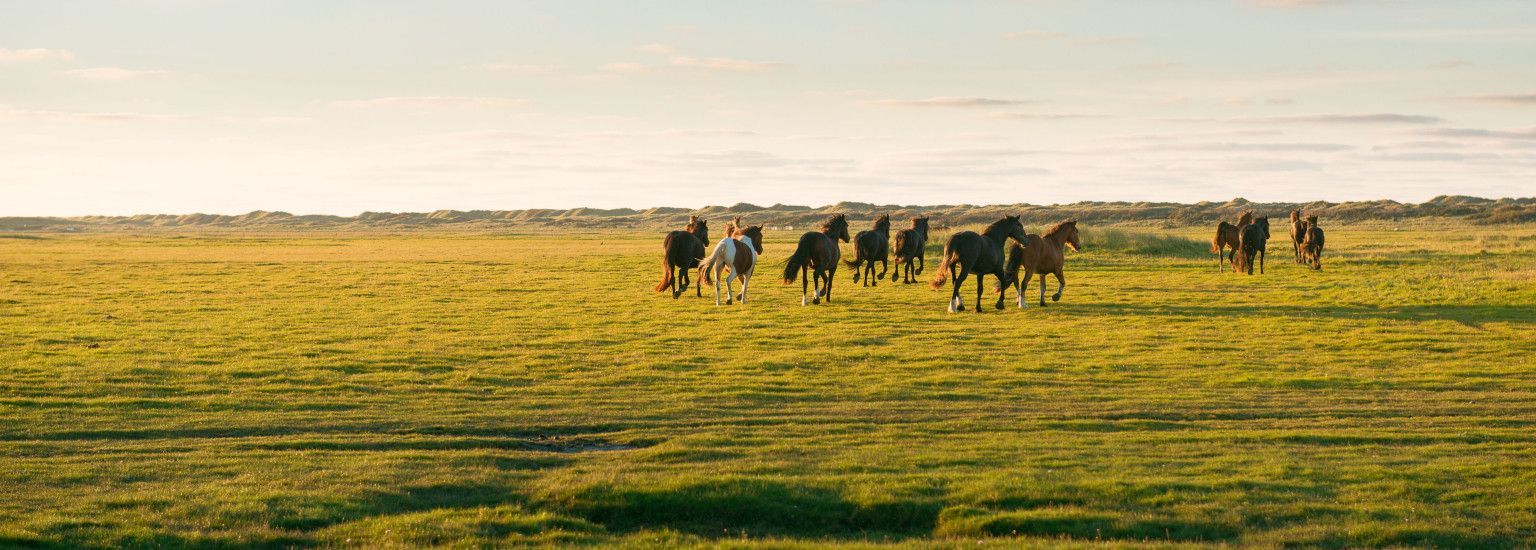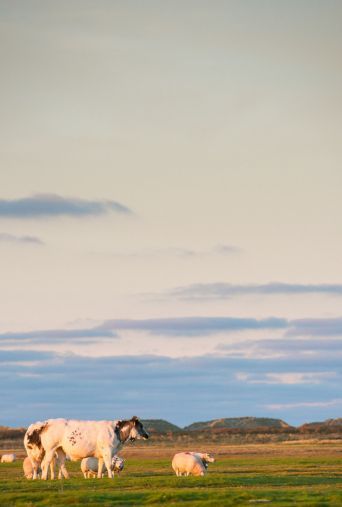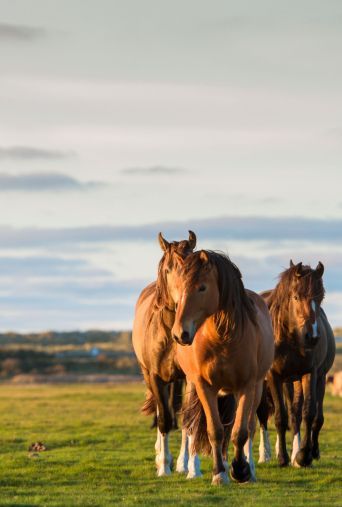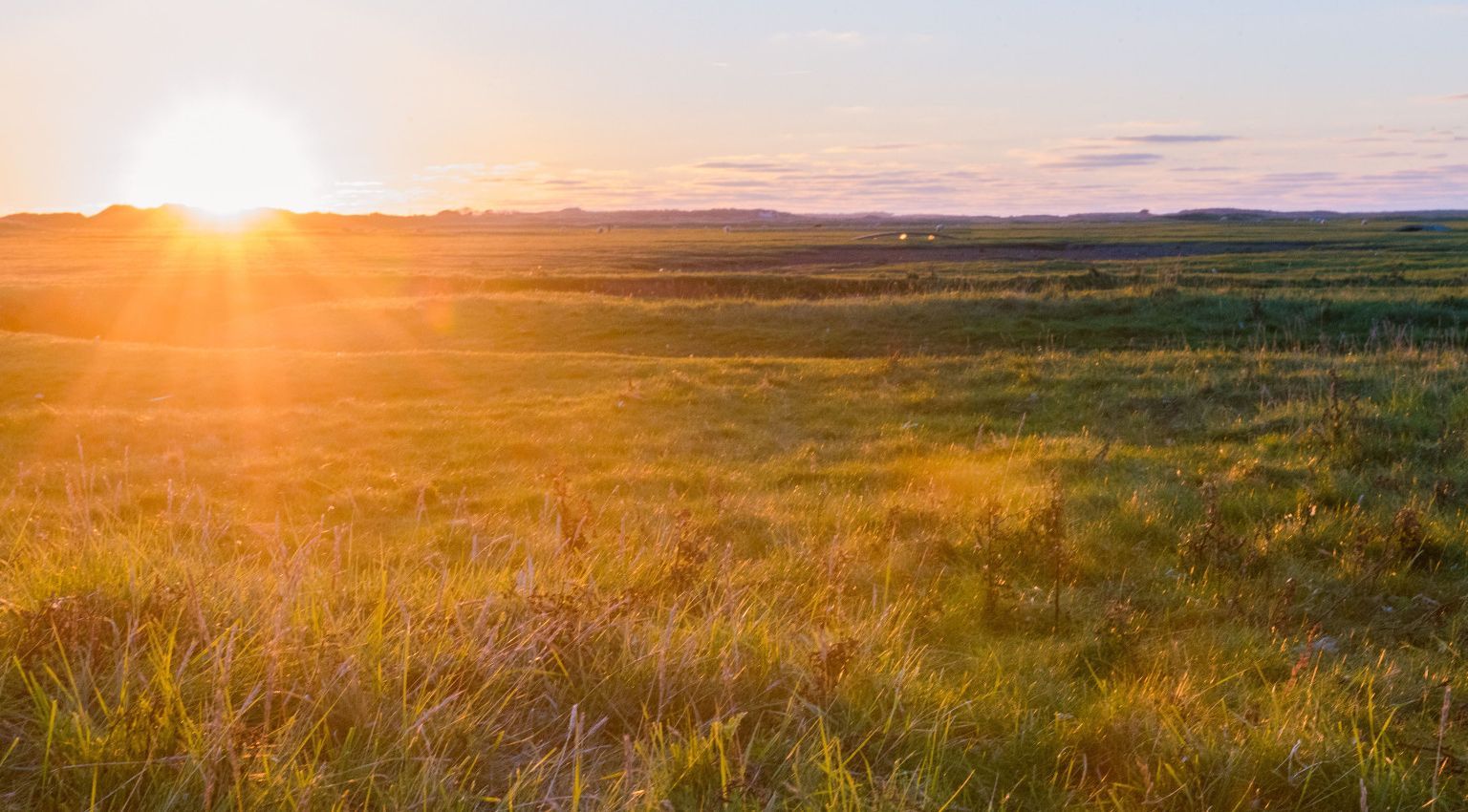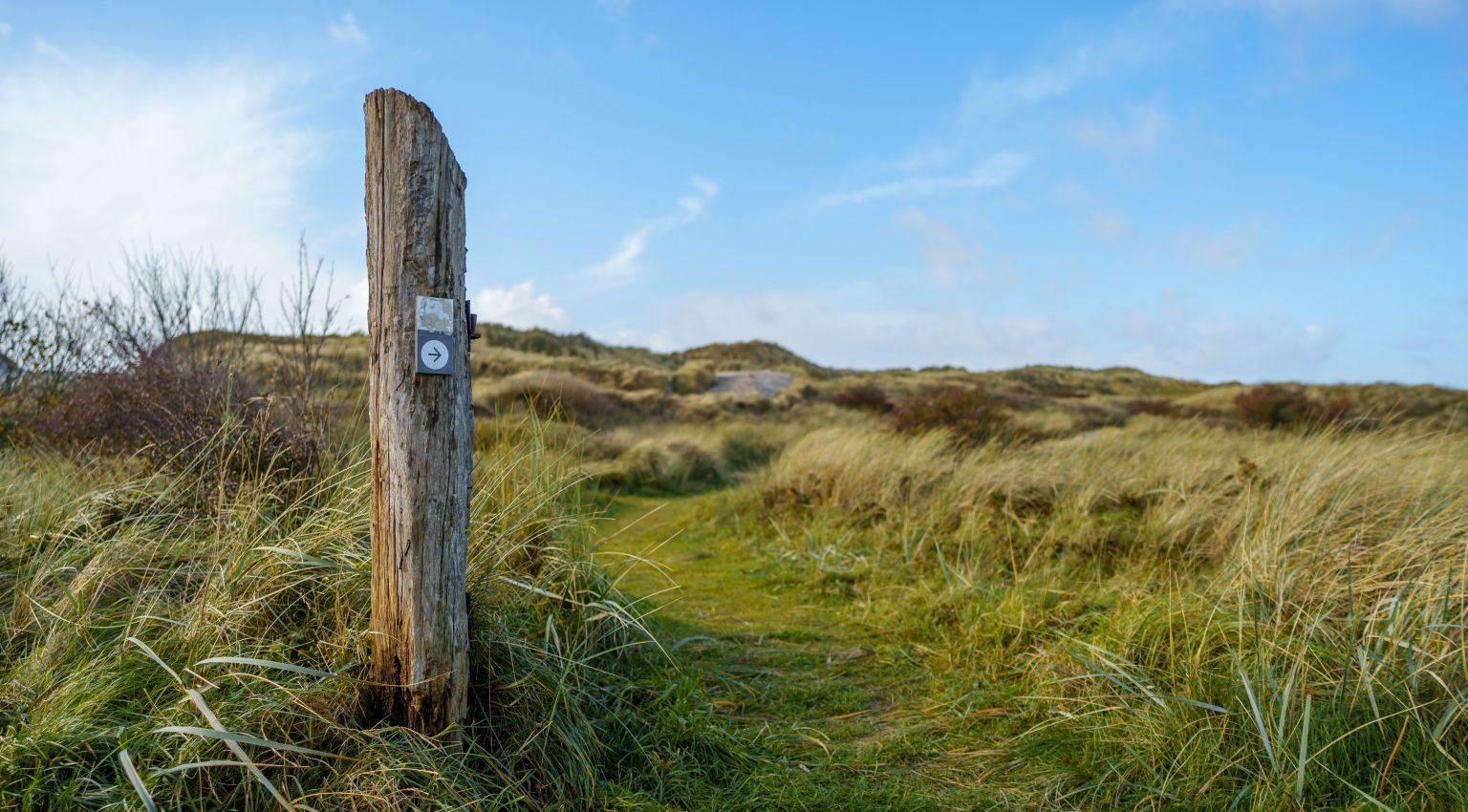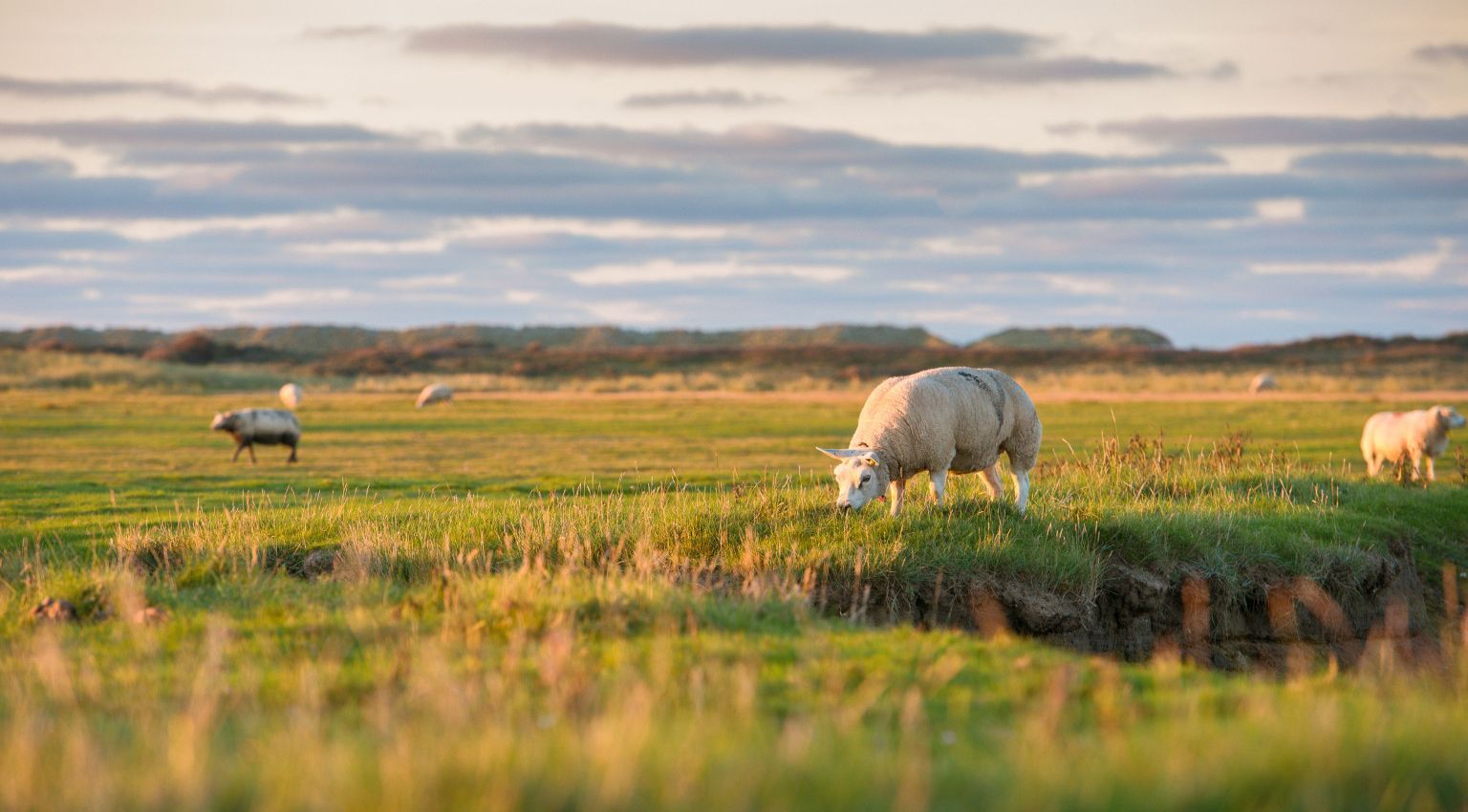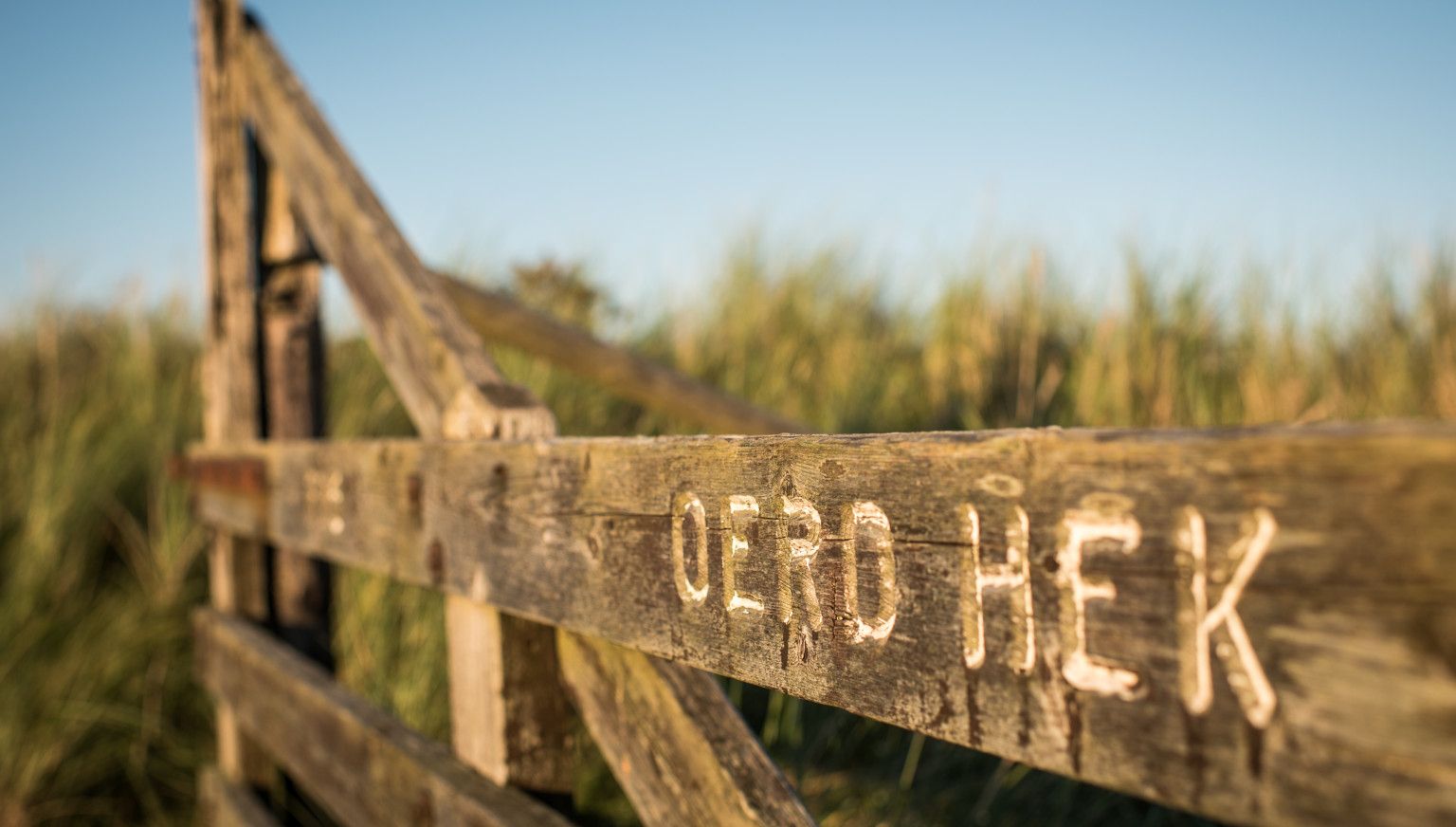The Partner: cows in the mud
A special sight: cows, sheep, and horses grazing between ditches and paddling in the mudflats of the Wadden Sea. A large part of the Nieuwlandsreid is owned by a company whose shareholders are Ameland farmers—commonly known as ‘De Vennoot’. It involves 560 shares, which have regulated the joint ownership of the rugged outside-dike area since 1920. One share grants the right for grazing by two sheep, one lamb, half a cow, or half a horse, from May 1 to December 1.
